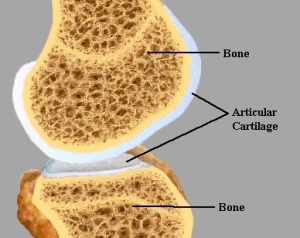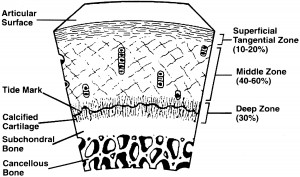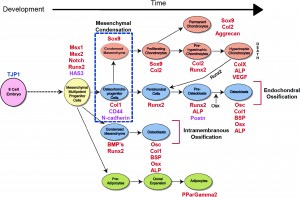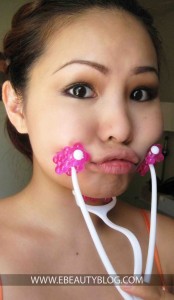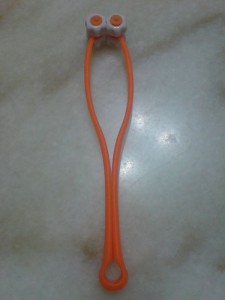About two months ago I got into exchanging emails with Harald Oberleander about whether he would be interested in coming on to the podcast and record an episode. Due to his desire to not reveal his voice and preserve his anonymity, he preferred that he would answer the questions I proposed to him in word doc format. This is the result of him working on the questions and getting us his answers. I hope any people who can help him and his organization will be able to help him and the cause out.
These are the 26 questions I asked him and the answers he gave to them.
Interview questions with Harald Oberländer, founding member of the „Biomedical Growth Research Initiative” (BGRI)
http://www.growth-research.org
Part I
Question 1: So what is your story? What makes you decide to take up this cause?
- Answer: I am a short statured German teacher, who has always been interested in the progress of biomedical research. I have always been sure, that biomedicine has the potential to revolutionize the therapy of unwanted short stature. But unfortunately there is currently worldwide nearly no specific research concerning the development of an innovative height increase therapy (for adults). That was the reason why I founded the “Biomedical Growth Research Initiative” together with some other short statured people from around the world.
Question 2: How tall are you? Do you feel a sense of insecurity over your size/stature?
- Answer: I am 1,67 m. Yes, I have always felt insecure because of my short stature.
Question 3: What got you interested in the subject of height increase or auxology?
- Answer: The problems resulting from my short stature and my interest in (bio-)medical research.
Question 4: Before you found this website, what other resources were you using in your
research?
- Answer: Mainly Pubmed, http://www.biospace.com , http://news.yahoo.com and http://www.makemetaller.org
Question 5: … And how did you find about the website?
- Answer: I found it with a google search result.
Question 6: Now do you want to talk about your experiences with interacting with people on the other boards and forums?
- Answer: There has always been some interest concerning our support for serious height increase research. But unfortunately very few people want to support the development of such a therapy actively.
Question 7: Why has it been so hard to deal with those people on the internet forums and boards?
- Answer: As I already said: Most people don´t want to invest time and efforts in order to support the development of a safe and effective height increase therapy.
So we have been quite ineffective during the last few years, as we only have few active members.
Question 8: So how much money in initial funding are you looking for?
Answer: We have received three detailed research proposals from research teams at universities in the USA, Canada and Hong Kong. Lately we were also contacted by a young German researcher, who has some very interesting ideas, but not a formal research proposal yet. At least 250.000 dollars are needed to start one of these projects. This money would be given directly to the researchers, not to the BGRI. Of course every seriously interested donator or investor will receive the official research proposals after signing a standard confidentiality agreement and he/she will be able to visit the researchers personally at their universities before making a final funding decision.
Question 9: How long has the organization existed?
- Answer: We started with some first steps concerning the “Biomedical Growth Research Initiative” in 2003.
Question 10: Why is the address of the organization based in Israel?
- Answer: Our former webmaster lives in Israel and he also created the P.O. Box address for us. Unfortunately he is no longer active. So we are currently looking for a new webmaster in order to update our homepage from time to time.
Interview questions with Harald Oberländer, founding member of the „Biomedical Growth Research Initiative”
(http://www.growth-research.org)
Part II
Question 11: Why do you think it has been so difficult in finding even one investor into the research?
- Answer: We have contacted several venture capital companies. But unfortunately it is not so easy, as you may think. First of all: Short stature is only in extreme cases (like e.g. achondroplasia) an accepted medical disease and nobody has ever really tried to develop a safe and effective biomedical height increase therapy for short statured adults. Additionally most biotech investors prefer to invest into late stage products, that are already in human clinical trials. There is a significant fear to loose money, if you invest too early in a biotech therapy. You have to know, that even established biotech companies (like e.g. Advances Tissue Sciences, Valigen, Kimeragen and many others) with promissing product candidates have run out of money during the last few years. To sum up: At least during the starting phase a donator or an angel investor with a significant personal interest would be the ideal answer. As soon as human clinical trials have started, it will be much easier to attract large institutional investors. But without personal contacts it is really hard to find serious wealthy short statured donators or investors. In the past we have had three contacts with individual investors, but in the end they couldn´t fulfill their promises. So we need every help we can get in order to find a serious donator or investor (ideally with a personal interest in height increase research).
Question 12: What types of research have you personally been doing?
- Answer: I am not a researcher, I am a short statured person. The BGRI is some kind of international support group. We are “only” in contact with (bio-)medical researchers around the world.
Question 13: What areas of research or ideas do you think are the most promising?
- Answer: Tissue engineering, growth factors, gene therapy, stem cells and maybe LIPUS offer interesting perspectives. But only specific height increase research projects could tell, which way will be successful. So I can´t answer your question without further scientific research results.
Question 14: Which countries are actually looking at this scientific endeavour seriously?
- Answer: As I already wrote: we have been in contact with researchers working at universities in the USA, Canada, Hong Kong and Germany.
Question 15: Have you ever thought about going through with the limb lengthening surgery?
- Answer: Yes, I have thought about that. But I still hope for better options in the foreseeable future.
Question 16: Are you familiar with Tyler´s method Lateral Synovial Joint Loading? What is your opinion on his proposed technique?
- Answer: I have read about it. My opinion concerning Tylers´s method is: maybe it will have some little effect (like e.g. regular stretching exercises) of about some centimetres in the best case. But I don´t know any published human clinical studies concerning this program. So there is no scientific prove, that it will work.
Question 17: Can you go into a little more detail in explaining how you think the theory actually works out?
- Answer: I had to sign very strict confidentiality agreements with the involved universities. So I am not allowed to reveal more information in a public interview. If an interested donator or investor wants to have more detailed information, he/she will be very welcome to contact me personally at any time.
Question 18: Have you found anything recently?
- Answer: Our most recent contact has been the ideas of the young German researcher.
Question 19: Now, this next question is to sort of play Devil´s Advocate. What makes you believe that the ability to increase our height after growth plate closure is even possible?
- Answer: Biomedical research has already resulted in some really innovative medicines approved for the general public, e.g. tissue engineered cartilage (http://www.biotissue.de/en-ProductsPatientsBioSeedCIntroduction.html), the gene therapy “Gendicine” against cancer (http://www.nature.com/nbt/journal/v22/n1/full/nbt0104-3.html ) or bone morphogenetic proteins (http://www.stryker.com/cn/products/Orthobiologicals/Osteoinductive/OP-1/OP-1Implant/020210 ). And there are several exciting biomedical research results, that may have relevance for developing an innovative height increase therapy. So I am convinced, that there is a reasonable chance for success.
Question 20: Can you give some evidence in terms of recent studies or published papers which show that there are some researchers and groups that are really making headway into the search?
- Answer: Unfortunately there is currently worldwide nearly no specific research concerning an innovative height increase therapy for adults. Nevertheless some research results for other indications (e.g. growth plate injuries, bone healing, limb regeneration) would surely have relevance for developing a safe and effective biomedical height increase therapy. You will find some very interesting studies on pubmed by searching for e.g. “bone tissue engineering”, “growth plate regeneration” or “limb lengthening growth factors”.
- A lot of very interesting studies can also be found on your homepage (http://www.naturalheightgrowth.com ).
Question 21: In your professional opinion, What is the area of study me and other seekers out there should probably be focusing on? Stem cells, gene therapy, bone loading techniques, growth plate regeneration?
- Answer: In my opinion all these approaches could lead to innovative therapy options.
Question 22: Within 20 years, do you think we will have an alternative to limb lengthening surgery?
- Answer: As far as I can see this is mainly a question of the invested money and resources concerning specific height increase research. From the scientific point of view this would be more than realistic, I think.
- With adequate support a much shorter timeframe should be possible.
Question 23: Beside height increase, what other interests and field of studies are you doing research in?
- Answer: I am not a researcher, but a short statured support group member. So I am not doing research myself.
Question 24: Now do you have any suggestions on how the website can be improved on?
- Answer: A discussion forum would be great, so that your readers could connect with each other.
Question 25: Do you have your own blog or website?
- Answer: Our homepage can be found at http://www.growth-research.org
Question 26: Now if we wanted to find out more about your research, how can the readers reach you?
- Answer: You can contact my by e-mail at harald_oberlaender@hotmail.com

